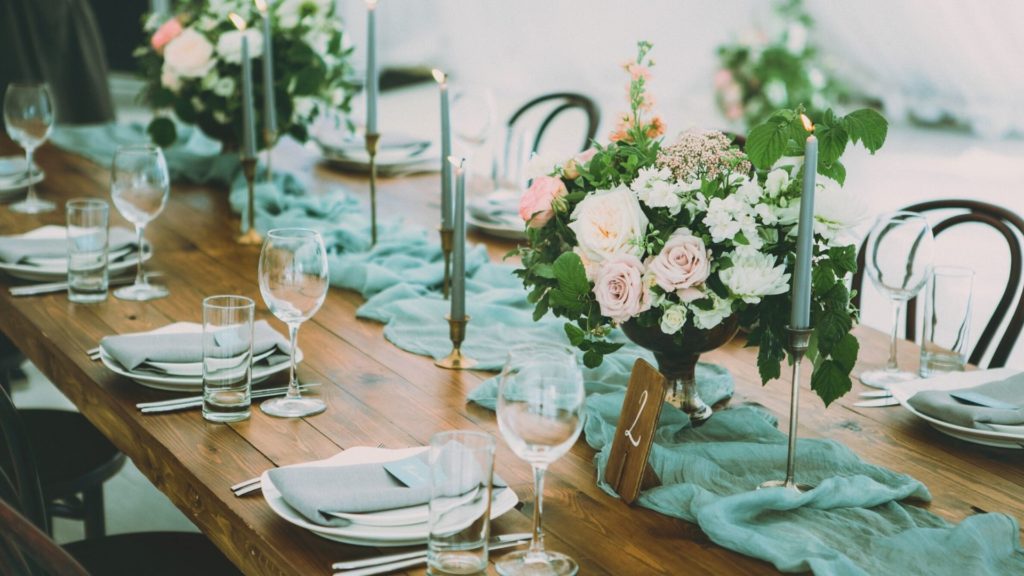At weddings, all eyes are on the bride, but guests also love to focus on food. After the ceremony is complete and cocktail hour comes to a close, it’s customary to serve your guests a meal of some sort. The big question comes down to whether you will serve a buffet or sit-down dinner. Read on as Everyday Bride explores the pros and cons of each option.
Buffet Pros
There are many benefits to hosting a buffet-style dinner at your reception. Check out some of the most notable pros to a buffet wedding.
Freedom To Hit the Dance Floor
When people can serve themselves and eat dinner at their leisure, there is more potential time for dancing. If you want a wedding where the dance floor is packed and people are having an active and exciting time, then a buffet-style feast might provide the freedom you’re after.
With a buffet, there is no awkward downtime between courses. There is only one course that’s tailored to the individual’s needs since guests serve themselves.
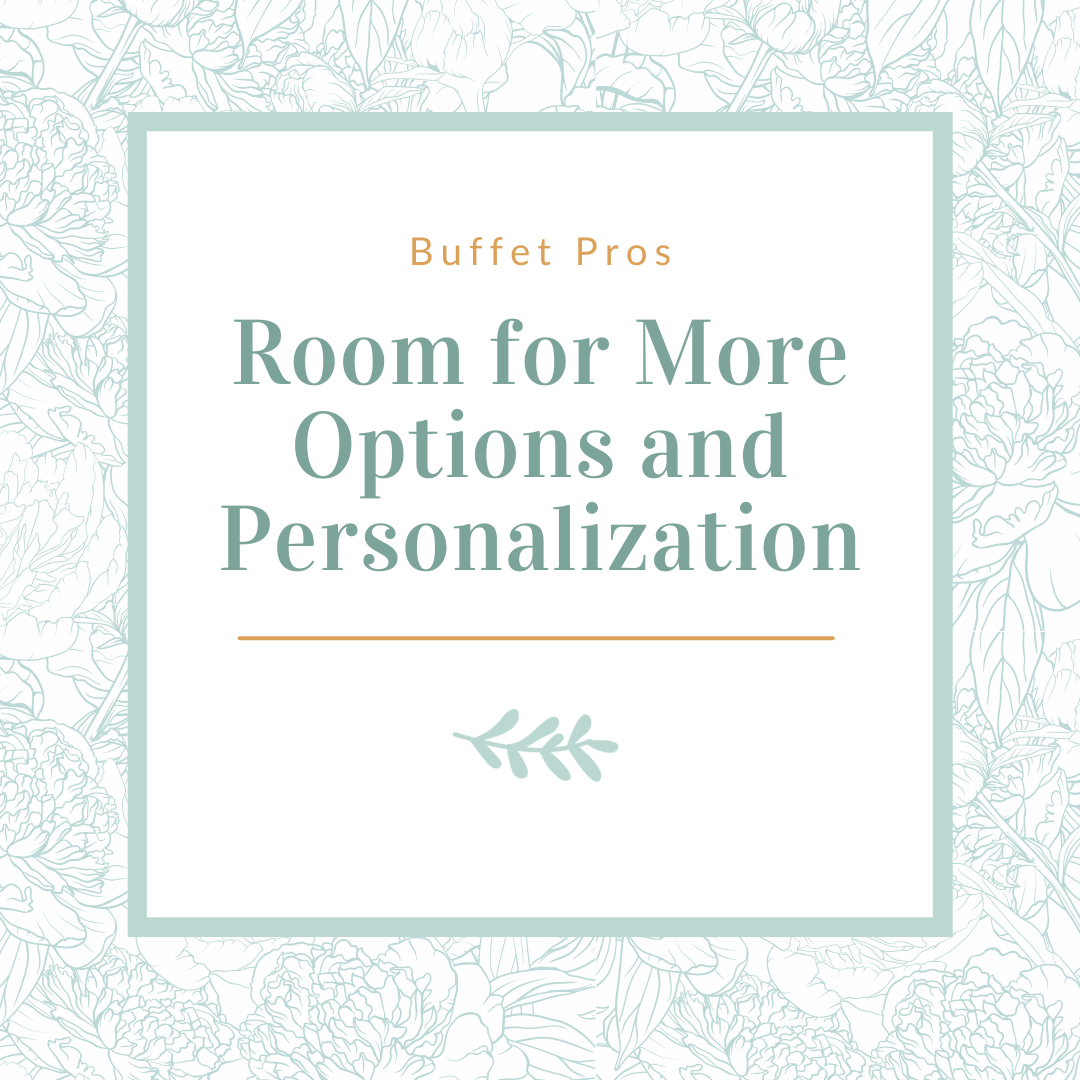
Room for More Options and Personalization
A buffet-style meal offers many more options and food combinations than what is typically available for plated meals. With a buffet, you can choose multiple proteins, a smattering of sides, and even salads or soups for bonus courses.
Guests can customize the types of food they like and avoid those they don’t. This dining option allows guests to take what they like when they’d like it.
Guests Can Take as Much as They’ll Eat
Plated meals may leave some guests feeling stuffed and others yearning for more. Buffets allow your guests the freedom to fill their plates to their heart’s content. At a buffet, plates are placed at the beginning of the line, and guests can serve their own portions.
This leads to less food waste since people can take what they’re hungry for. Tailoring plated options to suit every guest’s appetite can get tricky.
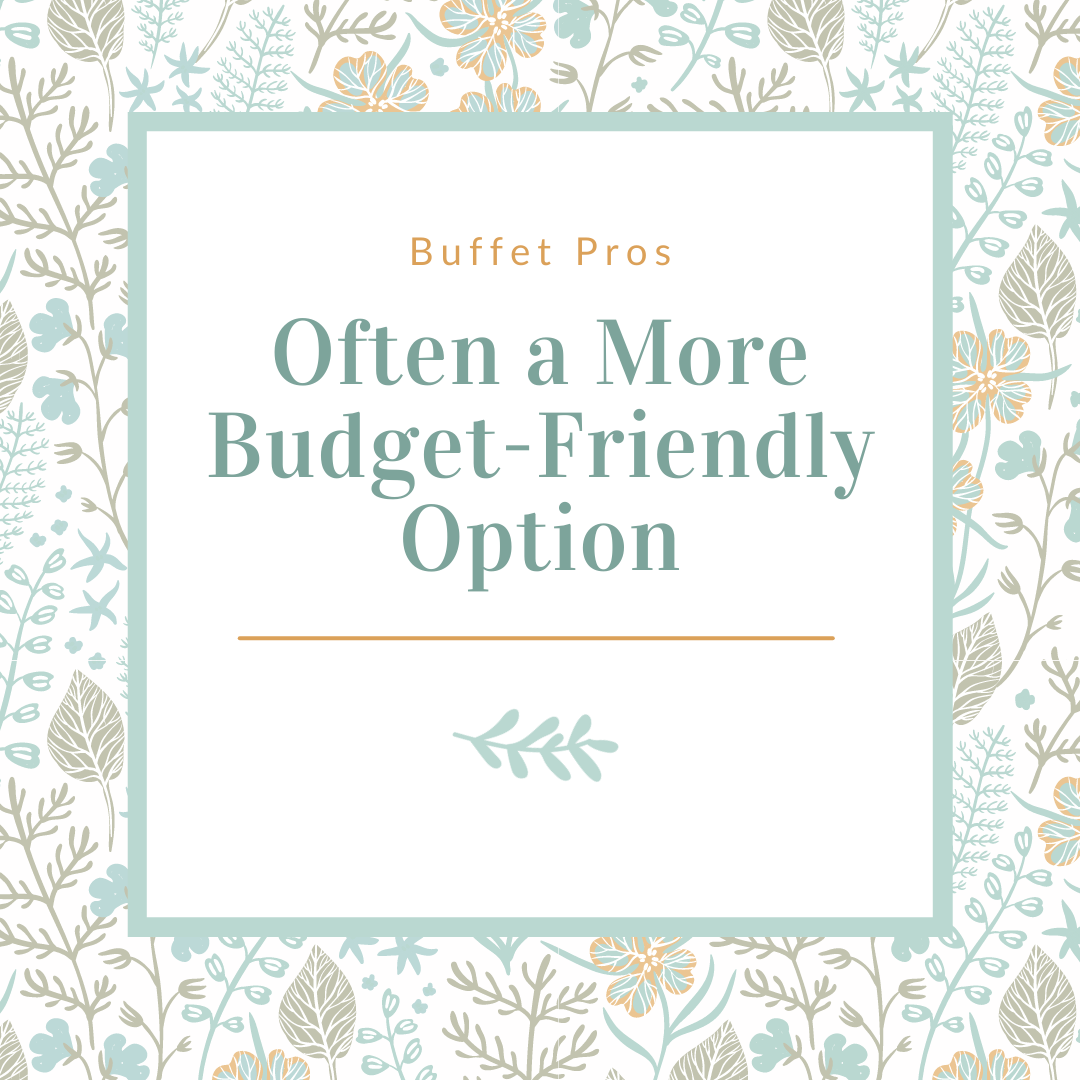
Often a More Budget-Friendly Option
One of the most significant benefits of serving your wedding meal as a buffet is the cost savings compared to plated meals. Although you will often order more food for a buffet than you would with a plated meal to avoid underserving, the need for service staff is drastically lower.
Because the guests will serve themselves, you don’t need to hire as robust a wait staff—and you can save on the food types you purchase. On average, a buffet meal costs about $27 per person, which is a significant saving compared to the nearly $40 per person cost of a plated meal.
Sit-Down Dinner Pros
While there are great reasons to provide a buffet at your wedding, sometimes there is no substitution for a traditional plated dinner option. Check out the benefits you get when you choose a pre-fixed plated meal option.
Adds a Layer of Elegance
Going with a classic plated meal for your wedding dinner adds a layer of elegance to the night. The traditional option—a multiple-course meal served by waitstaff—makes the event feel elevated and classy.
If you want a truly refined experience for your guests on your wedding day, a multi-course plated meal option is the best choice.
Keeps Food Top Quality
A plated meal option ensures that the food you serve your guests is fresh, hot, and not touched by anyone but the cooks who follow food safety protocols. Especially with the continued concerns about the spread of COVID-19, a plated option keeps food away from as much contact as possible.
There is also less potential for food to dry out since plates are served at once rather than sitting out on a buffet table.

More Seamless Dinner Experience
While a buffet allows for flexibility, plated meals keep everything cohesive and running smoothly. Everybody eats at the same time and enjoys courses at the same time. This lets your dinner experience pass by seamlessly.
There is no up and down from guests, and everyone is at their tables, mingling within them and enjoying a cohesive experience together. With a plated meal, there are no buffet lines to wait in or chances to accidentally miss the meal.
Easier To Schedule Reception Events
With a buffet, it can be tricky to schedule out important events within your reception, such as the first dance, speeches, and cutting the cake. However, you can easily fit those events in between courses during a plated meal, making scheduling your big day a logistical dream.
Buffet Cons
While there are many added benefits to choosing a buffet for your reception, there are also some downsides to consider.
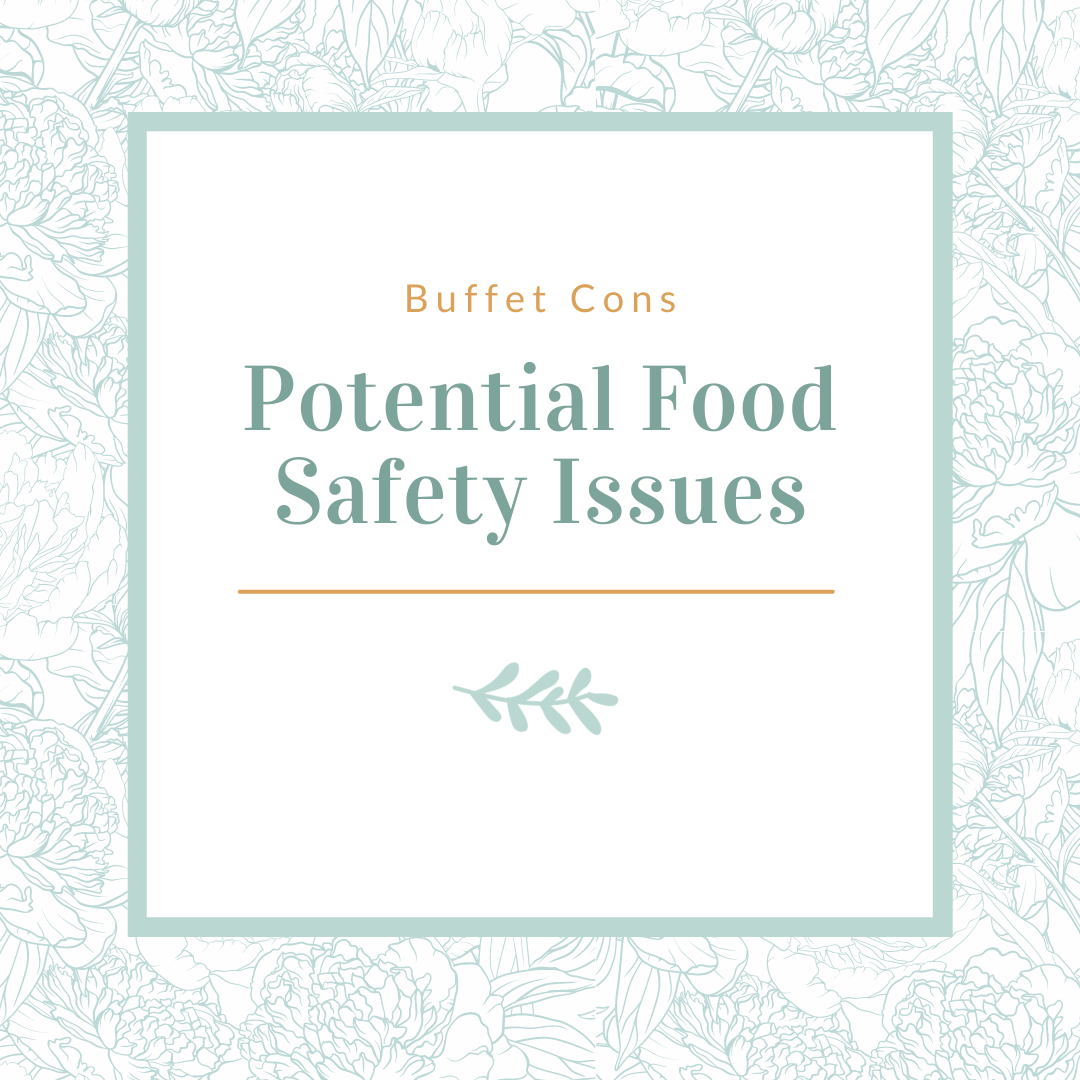
Potential Food Safety Issues
With the COVID-19 pandemic persisting, it’s important to consider the potential food safety and health risks of a buffet. If nobody wears a mask to the buffet table, there will be many people standing close together and breathing on or near the food.
There is also the concern of cross contamination, which may occur if guests mix up the serving utensils between meat options. If you opt for a buffet, consider requiring masks and labeling the serving utensils to minimize food safety issues.
Allergy Accommodations Become Tricky
If you have guests with allergies or food sensitivities, accommodating their needs becomes more difficult with a buffet. Be sure to clearly label your dishes and their ingredients to avoid an accidental allergy attack. It can also be beneficial to ask guests to identify any food sensitivities or dietary restrictions, such as being gluten-free or vegan, when they RSVP to your wedding.
Long Lines and the Potential for Disorganization
Buffets can lead to long lines and disjointed mealtimes. If you are serving a buffet-style meal for your wedding, try to call up different tables to serve themselves at different times to avoid long wait times and keep everyone at the table on the same schedule.
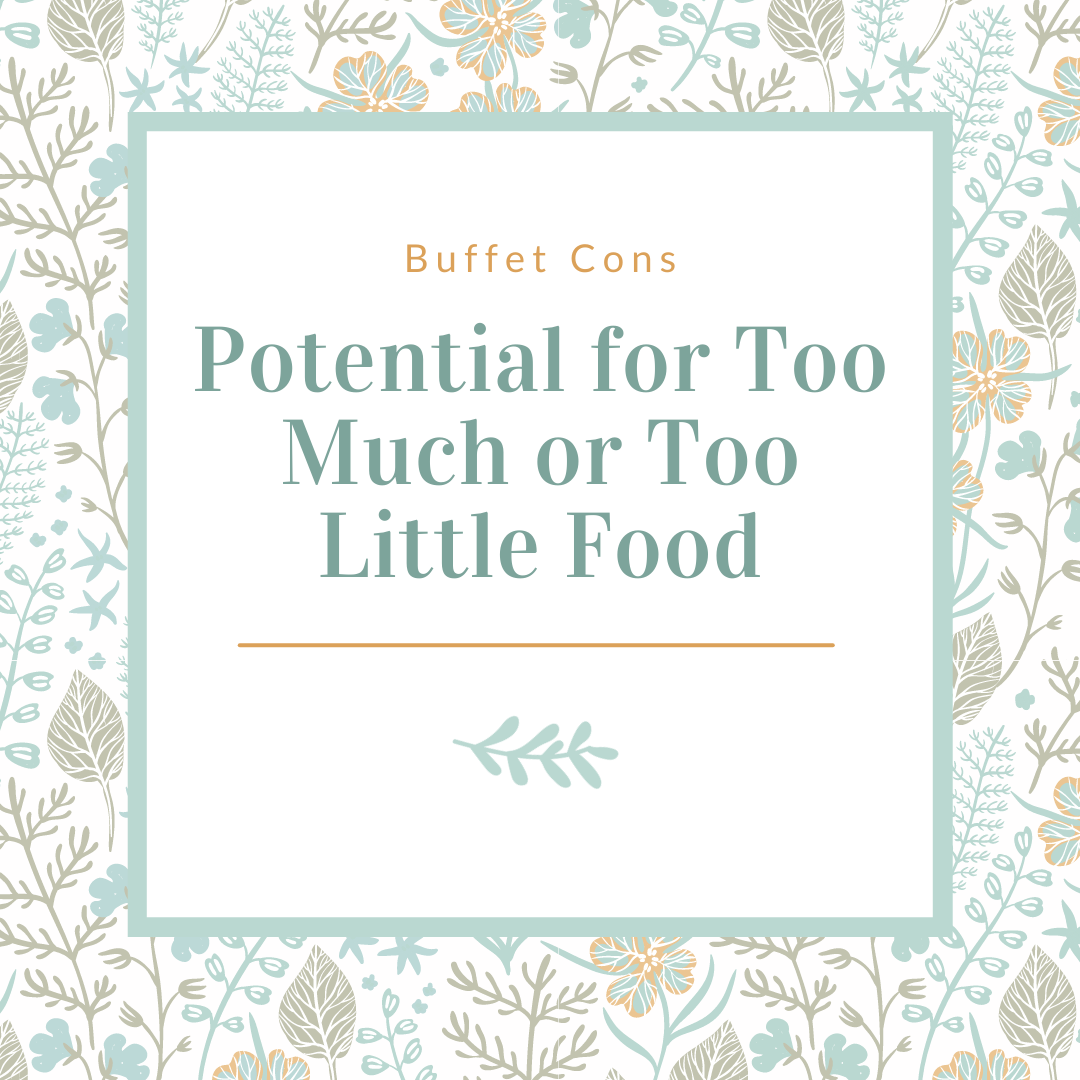
Potential for Too Much or Too Little Food
With a buffet, you never quite know how much food each person will consume during the event. It’s easy to end up with far too much leftover food or—even worse—run out of food mid-dinner. While your caterers or venue will have some insight on the general amount of food you will need, you should still be prepared with take-home containers in case you order too much.
Remember that it’s always better to over-order and keep the leftovers than not have enough food to feed all your guests.
Sit-Down Dinner Cons
There are a few downsides to sit-down dinners as well. Check out the most notable ones below.
Cost
Sit-down dinners tend to cost more than twice what a buffet meal would cost per person. While the meal may be a central part of the reception, allocating your budget to just the meal can sometimes leave other parts of the night a little lackluster. Ensure you leave room in your budget for meals and other things, such as decorations, music, and more.
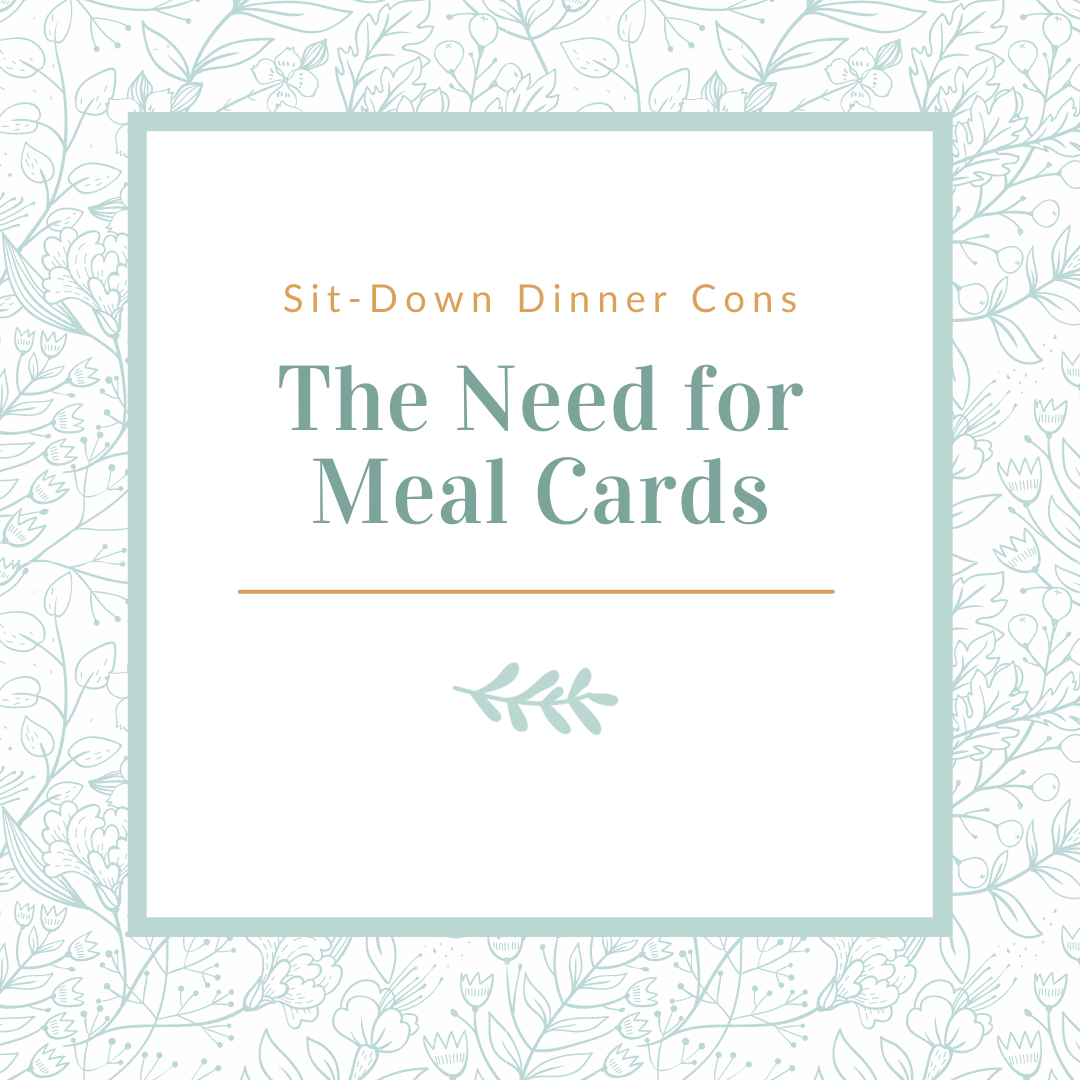
The Need for Meal Cards
When you serve a sit-down meal at your wedding, you’ll need to provide at least two options for guests to choose from—and you must ensure that your guests indicate their meal preferences prior to the wedding date. When you send out invitations, you also need to provide meal cards where guests can indicate their preference for a meal and that of any plus ones they plan on bringing.
More Wait Staff Required
Serving a plated meal requires much more waitstaff than a buffet. It is a careful logistical ballet to serve all guests at the same time—one which takes many servers and careful attention to detail. You’ll need to see if you can hire staff through your venue, caterer, or if you need to outsource it to a waiting company. This also comes with an added cost.
Can Take a While To Serve
Without a robust staff, plated meals can take a while to serve, which can get frustrating. If you plan to serve a soup or salad first, followed by a dinner meal and a cake or dessert option, the entire meal will take up a significant portion of the reception time.
It’s vital to understand the differences in how the meal type affects the flow of your reception. While a buffet may help keep you on budget, a platted meal may be a better option if you’re planning a smaller wedding. Congrats on your engagement! Remember that your day will be beautiful no matter what meal option you choose. Have a wonderful wedding day, bride!

